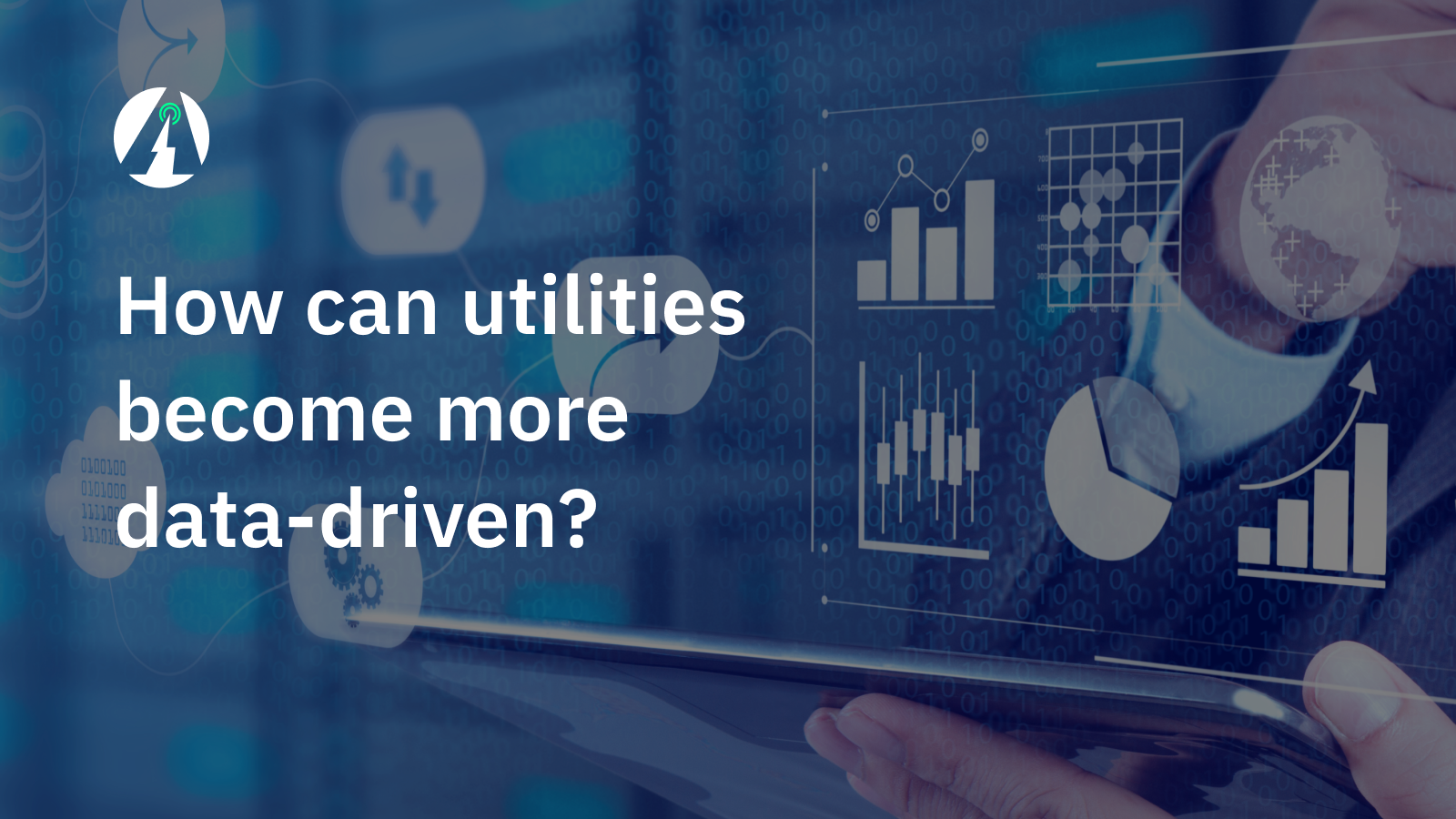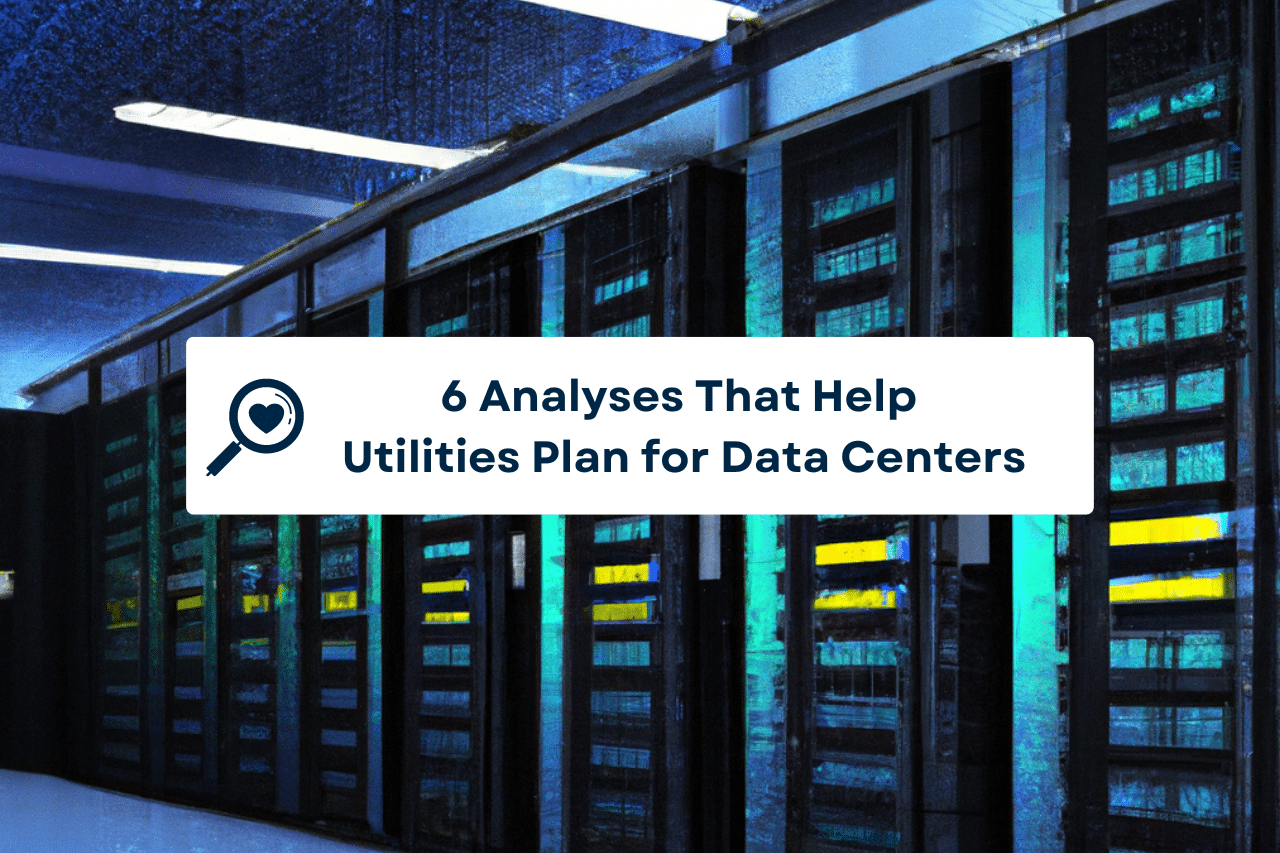Becoming a more data-driven utility is not an easy task, but a crucial one to begin asking. As increased smart devices, meters and sensors are connected to the grid, with that comes more data. What questions does a utility need to ask in order to become more data-driven, and prepare for their Digital Energy journey? We’ve highlighted some of the main ones below.
Do you have a process in place to capture data-related questions?
There are an unlimited range of questions that can be answered using the data at a utility’s disposal. Planning, Operations, Field crews, Analytics and Data Science teams all have different priorities and questions they need to answer to get their job done.
If a utility’s goal is to become more data-driven, and extract value from the data their grid and assets are generating, a structured use-case prioritization funnel should be put in place. Alongside this, a value chain for each identified question should be applied, to fully understand the benefits that could be realized by the organization by answering them.
When important questions are identified and their value understood, then the data sources needed to answer them can be pinpointed, and the people or tools needed to perform the analysis chosen in tandem.
Have you considered what foundations you would need to satisfy answering data-driven questions?
In order to answer energy-focused questions, a comprehensive data model designed specifically for energy is needed. You need a data model that ingests data from all the disparate systems impacting your grid – GIS, customer consumption data (AMI/AMR), SCADA, Distributed Energy Resource databases, EVSE databases, energy storage databases, and others. It should maintain an accurate connectivity model, representing how each component and asset in the network is interconnected. One way to describe this idea is an open energy data model, which is sensor and system agnostic in how it ingests data and makes it available.
Your teams need to be able to access the data rapidly and flexibly. The data should be accessible in a secure, repeatable way. It should be extracted in a clear format, which connects seamlessly with whatever applications or tools your teams use. These can include Business Intelligence tools, Data Science tools, planning tools, among others.
Once you’ve captured the questions, A. do you have technical resources to respond to them?
A key infrastructure consideration is whether the data is stored in a single, readily accessible place that can be utilized to empower your employees. Data lakes, warehouses, historians are examples of data storage repositories, but often don’t provide data in the required format to be useful.
To scale up your utility’s mission to become more data-driven and get value out of your data, data storage and governance policies need to be in place to allow the right people to access the right data so they can hit the ground running. Data quality is one of the most important factors. To use data for analytics, it needs to be of a sufficiently accurate standard so as to produce reliable results. Time series data from various types of devices in the grid also needs to be synchronized in order to analyze in relation with other sources. This can be a manual process if the right infrastructure is not in place to automate it. The goal should always be automatic, to accelerate your analytics efforts.
B. Do you have people resources to respond to them?
Every utility has different priorities, varied technical capabilities, complex infrastructures, and unique people. If the organization wants to become more data-driven, but doesn’t know where to begin, you can begin by asking what tools need to be put in place to empower your specific situation.
Different teams and departments will have different capabilities and expertise. Some might want to use Business Intelligence tools to perform analytics, others- Excel, data science, or notebooking tools, others- asset management and simulation tools. What’s needed across all of these? A unifying data model that removes repeated work to get data prepared. The data your grid and assets generate should integrate directly into the models and analytics your people and teams want to build, no matter the tool, no matter the technical expertise. This is enabled by a data layer, with functions allowing you to easily access your data, aggregate different data sources, and simplify data governance.
What should be considered is a digital energy platform that allows you to connect any type of tool, solution or application seamlessly and cost-effectively to your data. Empowering employees with the ability to make use of whatever tool works best for them is key.
Do you have the ability to share the outcomes of your data analytics?
Acting on the outcomes and results of your data analytics is undoubtedly the most important piece of the puzzle. Results should be presented in an easily digestible, shareable and actionable manner. When key questions have been identified, and the value understood, it becomes obvious who in the organization needs to act on the results.
Pipelines should be set up to share dashboards, reports, and insights with the correct people in a timely manner. This data can be static, dynamic, or real-time, either way, the correct, decision-making stakeholders should be made aware at the right time. That way you can empower them to make informed decisions. Only when the right people get data at the right time can a utility be on track to becoming more data-driven.
Take an example
A utility wants to become more data-driven as part of their grid modernization initiative. One project is focused on an asset performance monitoring and management campaign. A goal is to analyze historical and real-time health of the transformers in their service territory. In order to ensure the network is capable of withstanding growing numbers of Behind-the-Meter renewables and electric vehicle chargers, transformers must be analyzed as a starting point.
The utility begins by understanding the value of the use-case. Prematurely-blown transformers can cost the utility $7,000 each. With one hundred thousand transformers spread across the service territory, the risk is to $700 million worth of assets.
The utility gathers consumption data from their AMI meters, which is stored in an MDMS. The utility has grid connectivity information stored in the GIS system. They also maintain a limited database of residential DER devices and EV chargers. Using an ETL process, these databases can be integrated into one centralized location, which stores refined data from each of the sources, underpinned by a connectivity model defining which assets are connected to which. The data repository also synchronizes time series data from millions of meters, DER devices and EV chargers. This creates an open energy data model, that other sources can be layered on to later.
The utility can approach this in various ways. They have data analysts who are comfortable using PowerBI to build charts and reports. They also have engineers that would rather use planning or simulation tools. Members of the Grid Modernization team are more interested in using Jupyter Notebooks to perform analytics. As the use-case was proposed by the Grid Modernization team, they take the use-case forward and connect Jupyter Notebooks directly to the open energy data model, which synchronizes all required data and makes it readily accessible to the tool.
The analytics are designed in under a week using industry best-practices. Data is integrated into Jupyter Notebooks and the application, following some testing, runs seamlessly. Powerful reports and charts are generated, and the most important transformers are prioritized for upgrade. The total number of high-risk transformers is understood to be significantly higher than anticipated, however, re-allocation of over and under-utilized transformers can be performed easily with the insights gathered, saving millions on further asset investments.
How can a utility become more data-driven?
Almost any utility question can be answered by leveraging your data. By getting the right people, foundations and solutions in place to empower your team, data-driven decisions are only a step away. Data-driven utilities begin with the Awesense Digital Energy Platform.




